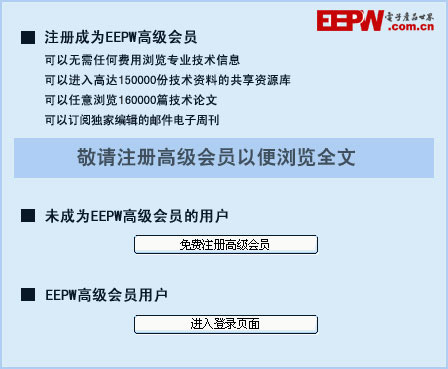精度調(diào)優(yōu)|c(diǎn)onv+depth2space 替換 resize 指導(dǎo)
在進(jìn)行模型壓縮與加速的過(guò)程中,量化技術(shù)成為了提升推理速度和降低計(jì)算資源消耗的重要手段。然而,在實(shí)際應(yīng)用中,許多用戶發(fā)現(xiàn),采用 resize 操作時(shí),僅能使用 int8 精度量化,這一限制導(dǎo)致了模型精度的顯著下降。盡管 int8 精度在提升計(jì)算效率方面具有優(yōu)勢(shì),但精度的喪失卻使得模型的推理結(jié)果偏差增大,給實(shí)際應(yīng)用帶來(lái)了不少困擾。如何在保證性能的同時(shí),最大程度地減少精度損失,成為了當(dāng)前技術(shù)實(shí)現(xiàn)中的一個(gè)難題。 在當(dāng)前工具鏈版本下(J6 3.0.31),resize 算子僅支持 int8 量化精度,不支持 int16,因此該類算子有一定概率觸發(fā)精度下降問(wèn)題。
2.方案介紹
onnx 中的 resize 算子,在 pytorch 代碼中常表現(xiàn)為 F.interpolate 函數(shù)。當(dāng) F.interpolate 的 mode 為 nearest 時(shí),該函數(shù)的功能和 conv+depth2space 完全等效。而 conv 和 depth2space 均支持 int16 量化,因此可以通過(guò)算子替換的方式變相實(shí)現(xiàn)上采樣的 int16 支持。
import torch
import torch.nn as nn
import torch.nn.functional as F
class Conv2DInterpolate(nn.Module):
def
__init__
(self, inputs_channel=1, scale_factor=2) -> None:
super().
__init__
()
self.conv = nn.Conv2d(
in_channels=inputs_channel,
out_channels=inputs_channel * (scale_factor**2),
kernel_size=3,
bias=False,
padding=1,
)
self.scale_factor = scale_factor
self.inputs_channel = inputs_channel
self.depth2space = torch.nn.PixelShuffle(scale_factor)
self._init_weights()
def _init_weights(self):
conv_weight = torch.zeros(
self.conv.weight.size(),
dtype=self.conv.weight.dtype,
)
num_conv = conv_weight.shape[0]
for i_N in range(num_conv):
i_c = i_N // (self.scale_factor**2)
conv_weight[i_N, i_c, 1, 1] = 1
self.conv.weight = torch.nn.Parameter(
conv_weight, requires_grad=False
)
def forward(self, x):
x = self.conv(x)
out = self.depth2space(x)
return out
if
name
== "
__main__
":
bs = 2
input_channel = 2
h, w = 120, 150
scale_factor = 8
model_inputs = torch.randn(bs, input_channel, h, w)
model = Conv2DInterpolate(
inputs_channel=input_channel,
scale_factor = scale_factor,
)
out_model = model(model_inputs)
out_func = F.interpolate(
model_inputs,
scale_factor=scale_factor,
mode="nearest"
)
print((out_model - out_func).max())
print((out_model - out_func).min())
這段代碼實(shí)現(xiàn)了一個(gè)自定義的卷積神經(jīng)網(wǎng)絡(luò)模塊 Conv2DInterpolate,其主要目的是通過(guò)卷積和像素重排 (PixelShuffle) 操作實(shí)現(xiàn)圖像的上采樣。下面逐步解釋代碼的各個(gè)部分和其作用:
1. 類 Conv2DInterpolate 的定義
構(gòu)造函數(shù) (init):
inputs_channel:輸入圖像的通道數(shù),默認(rèn)值為 1。
scale_factor:上采樣的倍數(shù),默認(rèn)值為 2。
該類首先通過(guò) nn.Conv2d 創(chuàng)建一個(gè)卷積層 conv,其輸入通道數(shù)為 inputs_channel,輸出通道數(shù)是 inputs_channel * (scale_factor^2),這個(gè)設(shè)計(jì)是為了后續(xù)進(jìn)行像素重排時(shí)所需的通道數(shù)量。
卷積的核大小是 3x3,且沒(méi)有偏置 (bias=False),使用填充 1 (padding=1),以保持輸入和輸出的空間尺寸一致。
depth2space:使用了 PyTorch 中的 PixelShuffle 層進(jìn)行像素重排(像素塊的重新排列)。這里的 scale_factor 控制著上采樣的倍數(shù),目的是將卷積結(jié)果的通道數(shù)重排為一個(gè)更高分辨率的圖像。
權(quán)重初始化函數(shù) _init_weights:
初始化卷積層的權(quán)重。此函數(shù)將卷積層的權(quán)重初始化為零,并根據(jù)一定規(guī)則修改權(quán)重。具體來(lái)說(shuō),它設(shè)置卷積核的中心位置 (conv_weight[i_N, i_c, 1, 1] = 1),以確保通過(guò)卷積操作得到期望的像素值。
這個(gè)操作的目的是使得卷積層在初始化時(shí)生成一個(gè)有意義的初始權(quán)重,從而為后續(xù)的像素重排操作提供有效的輸入。
2. 前向傳播函數(shù) forward:
對(duì)輸入張量 x 先進(jìn)行一次卷積操作 self.conv(x),然后通過(guò) self.depth2space(x) 進(jìn)行像素重排 (PixelShuffle),最終實(shí)現(xiàn)圖像的上采樣。此操作將通道數(shù)較高的特征圖轉(zhuǎn)換為空間分辨率較大的輸出。
3. 主程序部分:
在 if name == "__main__": 代碼塊中:
創(chuàng)建了一個(gè)隨機(jī)的輸入張量 model_inputs,大小為 (batch_size=2, input_channel=2, height=120, width=150)。
然后實(shí)例化了 Conv2DInterpolate 模型并進(jìn)行前向傳播。
另外,還使用了 F.interpolate 進(jìn)行基于最近鄰插值的上采樣操作,作為對(duì)比。
4. 輸出差異對(duì)比:
通過(guò) out_model - out_func,計(jì)算自定義模型的輸出 (out_model) 與 F.interpolate 結(jié)果 (out_func) 之間的差異,并打印出最大值和最小值。
這部分的目的是驗(yàn)證自定義的 Conv2DInterpolate 模型是否能與 F.interpolate 的最近鄰插值方法產(chǎn)生相似的結(jié)果。如果兩者結(jié)果的差異很小,說(shuō)明自定義模型的實(shí)現(xiàn)效果與標(biāo)準(zhǔn)的上采樣方法接近。
tensor(0.)
tensor(0.)
3.注意事項(xiàng)
若放大系數(shù)大于 2,建議使用多組 conv+depth2space 代替 resize,以實(shí)現(xiàn)較好的性能。根據(jù)實(shí)測(cè)經(jīng)驗(yàn),若 resize 放大系數(shù)為 8,且只使用一組 conv+depth2space 做 8 倍上采樣時(shí),板端運(yùn)行效率很差,而使用 3 組 2 倍上采樣的 conv+depth2space,板端運(yùn)行耗時(shí)會(huì)回到合理范圍。
*博客內(nèi)容為網(wǎng)友個(gè)人發(fā)布,僅代表博主個(gè)人觀點(diǎn),如有侵權(quán)請(qǐng)聯(lián)系工作人員刪除。








